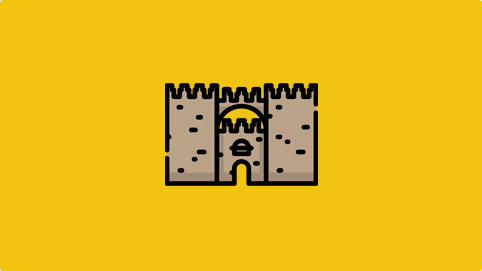Encounter Calculator 5e D&D Level 2 Level 2
Module description
This is the Encounter Calculator for D&D. It is specific for the D&D 5e version although it is also compatible with other versions of DnD or D20 games. In Pathfinder there are slight variations in the encounter system, being not so optimal for it this module although it could be used to improvise. Encounter generators for D&D 5e are based on mathematical calculations that allow the DM to assess the difficulty and add monsters according to the level of the players. With this, the enemies are "adequate" to the difficulty that the DM wants to give to the encounter. If you want more information about this module, click here.
dnd encounter calculator
This calculator has used the traditional method of the Dungeon Masters Guide 5e, where on pages 81-83 you will find all the mathematical calculations that are made in the program to give the values of the encounter. You can choose the number of enemies, in order to better adapt to the game situation, but always keep in mind the "cheking" parameter as it will tell you if everything is correct with respect to the chosen difficulty. This is because sometimes many enemies may exceed the chosen difficulty threshold, in which case you will have to decrease the number of enemies for that group of players or increase the difficulty accordingly.
In addition to showing the number of enemies and their Challenge Rating (CR), the module shows an estimate of the attributes for those monsters. These are average values of the individual at that level, meaning that no matter their size, class, race, weapons or magic items/magical abilities. It is a quick reference with which the DM can improvise the enemy's stats regardless of their form. Some practical examples of this are shown below with some comments. Some of the content belongs to Open Game License OGL. This content is not official D&D content, but an approximation for Game Masters based on D20 system. This is not an official Wizards.com generator, just one inspired by and compatible with this universe.
How does this module work?
Just click on "Calculate" after putting the number of players in each box, next to their level, add the number of enemies you want for the encounter (0 is random) and the difficulty.
Encounter calculator 5e
The encounter description will show several possible combinations for that number of enemies each time the "Calculate" button is pressed again. This is because for a static amount of enemies (for example 3) it may be that one of them is more powerful than the other two, giving an encounter with a "miniboss" instead of 3 enemies of the same level. In addition, when the encounters are very large, it can also lead to situations where these minibosses also have minions or elite bodyguards with a higher level than the basic troop. One way or another, the encounter is always calculated according to the difficulty chosen for the players, so it will never be unbalanced.
In the event that the number of enemies selected exceeds the difficulty threshold for the level and number of players, a "Checking" will be displayed in the encounter description to let you know if everything is correct or not. In case the theoretical difficulty exceeds the difficulty selected by the DM, you will have to either raise the difficulty or lower the number of enemies to make the encounter more balanced. There are 5 difficulties instead of 4 which are the official D&D difficulties. The last one added is "Nightmare" or "Madness". This difficulty is only for very experienced players with well-equipped and optimized characters, as it is a difficulty so high that it borders on the impossible. Finally, the encounter threshold (a mathematical term that really provides nothing more than descriptive information) and the experience reward per player if they pass the encounter (which is the practical part of the previous concept) are shown.
CR calculator 5e
Although the tool shows the CR (Challenge Rating) of each enemy and its amount, it is possible that the DM does not have the Monster Manual in front of him or does not have time to look for the right opponents at the right moment. Therefore, generic basic stats have been added for each enemy's CR. This helps to be able to play with these enemies without requiring the monster's actual attributes. In the case of D&D 5e, Save and Stats values are provided. The latter are shown as follows: +3,+2,+1,+1,+1,+0,-1, which refer to Strength, Constitution, Agility, Intelligence, Wisdom and Charisma bonus. The highest value will correspond to the most optimal value for the character (if it is a warrior it will be strength, a rogue dexterity, a mage intelligence, etc.). As they are generic values balanced to that difficulty level, the exact values are not required, being the bonuses enough to pass all the checks needed. In case you are playing an older version of Dungeons & Dragons, (3.5 or 3.0 for example) the save values for Fortitude, Reflexes and Will of the enemy are also offered.
5e encounter calculator
The statistics displayed sometimes have two numbers associated with them. These are, at the DM's discretion, the values to choose to "customize" the enemy. We recommend that the first value be for enemies with ranged abilities or weapons, and the second for enemies that are melee. Let's show a practical example of how to use this CR information:
The players enter a jungle when they are surprised by some native creatures. The players are 4 characters of level 4. Being an encounter in a jungle, the DM decides to set the difficulty to Medium. The encounter is 5 enemies, of which there are four (CR 1/8) and they are accompanied by a stronger one (CR 1). (Data obtained with the calculator).
The DM doesn't have the book at hand, but he has thought that he wants enemies that go along with the main plot. So he decides that the four small ones are Goblins and the strongest one is a Goblin shaman with the ability to turn into a giant snake. The DM then initiates combat and uses the generic stats data. Regardless of the official D&D values, the Goblins, the Shaman and the Snake will have the values shown, as these are independent of size, weapons or any other factor, and are balanced to the encounter, and the combat can be improvised in a simple way.
The DM decides that 2 of the 5 goblins will carry bows, so he will use the reference parameter Dmg : 2-4, using the lowest for being ranged (2) with the lowest AC offered (10) and the lowest life (HP 3) to symbolize that they are of a shooting class, less robust and resilient but with the advantage of ranged attacks. The other two goblins will be combat, with sharp weapons, shields and armor, using the combat damage attribute (4) which is the highest of that Challenge Value, with AC 13 and HP 6 to symbolize that they are hardened warriors at short distances.
Finally, the shaman will initially cast ranged and area spells, in this case he will use the Aoe Dmg value 5-7, (Area of Effect Damage), using the lower one because it is a ranged attack. The HP value will be 15 (the lower of the two shown) and the AC 12 as well. The shaman will try to paralyze some player, and for this he will use the Spell DC 11 of the stats. Once the players get close, the DM decides to turn him into a snake, changing his attributes completely (but keeping the wounds he has already done in case he has been damaged). It now has an AC 15 and HP 30, attacking in melee with 8-12 damage (taking 12) and with poisoned attacks (which if they are paralyzing can use the DC 11 difficulty as well). The master decides that, being such a large snake, it will be able to make a sweeping attack with its tail at some point in the combat. For this he will use the AoE Dmg, but using the value 7 instead of 5 for being in melee.






